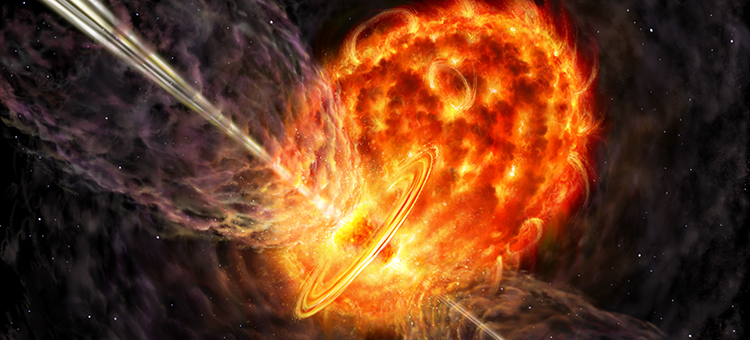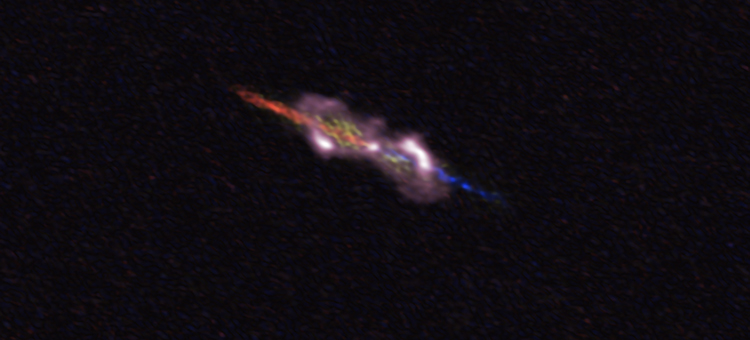Centro de Astrobiología (CAB, CSIC-INTA) participates in the study of fifteen peculiar stars which turned out to be double stars that, after sharing an envelope, lost most of their mass.

Unlike the Sun, most stars form binary systems, in which two stars revolve around a common center. Sometimes the distance between the two is so small that one of them, when it evolves into a red giant, engulfs its partner and they share a shell. An international team, with the participation of the Instituto de Astrofísica de Andalucía (IAA-CSIC) and the Centro de Astrobiología (CAB, CSIC-INTA), has studied a sample of fifteen unusual stars with the ALMA telescope, and has found that all of them had recently undergone an episode of this type. The finding, published today in Nature Astronomy, provides new insights into the life, death and rebirth of stars.
Referred to as “water fountains,” these fifteen stars were known to exhibit radio emission characteristic of water vapor molecules. “We were very curious about these stars, which eject large amounts of dust and gas into space, some of it in the form of jets with speeds of up to 1.8 million kilometers per hour. We thought we might find clues about how the jets are created, but instead we found much more than that,” says Theo Khouri, a researcher at Chalmers University of Technology (Sweden) who leads the study.
“It was thought that the water fountains were stars more massive than the Sun, with between four and eight solar masses, but in this work we see that they began their lives with a mass similar to the solar mass and that they have gone through a common envelope phase. Therefore, they show a more violent loss of mass than would be expected in a solar-type star,” says José Francisco Gómez, a researcher at the Instituto de Astrofísica de Andalucía (IAA-CSIC) who participated in the discovery.
The team measured with the ALMA radio telescope (Chile) the emission of carbon monoxide molecules in the light from stars and compared the signals of different carbon and oxygen isotopes. “ALMA is providing revolutionary results. It is particularly efficient for getting into the hitherto unexplored deep central regions of the gas and dust clouds surrounding these water sources, and will allow us to finally find out how the stellar wind is narrowed and accelerated in the form of jets in these late stages of the evolution of solar-type stars,” says Carmen Sánchez Contreras, a researcher at the Centro de Astrobiología (CAB, CSIC-INTA) who is participating in the study.

REFERENCES
T. Khouri et al. “Observational identification of a sample of probable recent Common-Envelope Events”. Nature Astronomy, Dec 2021
SOURCE: Comunicación Instituto de Astrofísica de Andalucía (IAA-CSIC)








